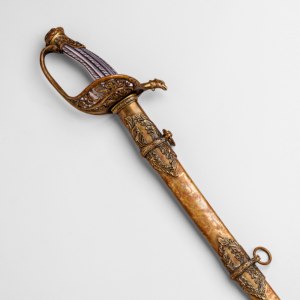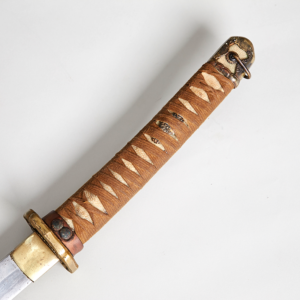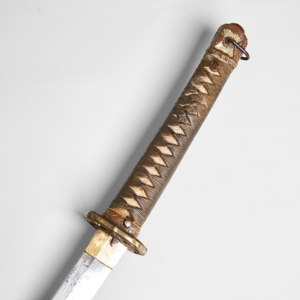1889 Garde Du Corps Order of the Black Eagle Sabre
The 1889 Lions Head Sabre, a symbol of prestige and honor, was an exclusive weapon wielded by the elite Garde du Corps, the personal guard of the Prussian King. This ornate saber, with its distinctive lion’s head pommel and intricate detailing, was more than just a weapon – it was a statement of loyalty and status within the kingdom.
Crafted with meticulous attention to detail, the saber’s hilt was a work of art in itself. The lion’s head pommel, a symbol of courage and strength, was often adorned with ruby eyes, a luxurious touch that added to the saber’s grandeur. The hilt’s intricate design, often featuring floral patterns and the insignia of the Order of the Black Eagle, further enhanced the saber’s aesthetic appeal.
Key characteristics of the 1889 Lions Head Sabre
- Lion’s head pommel: A symbol of courage and strength, often adorned with ruby eyes
- Intricate hilt design: Featuring floral patterns and the insignia of the Order of the Black Eagle
- “Suum Cuique” inscription: The motto of the Order of the Black Eagle, meaning “To Each His Own”.
- Curved blade: Primarily designed for slashing, but also capable of thrusting
- Balanced and weighted for combat: A formidable weapon in the hands of a skilled swordsman
The Order of the Black Eagle, the highest order of chivalry in the Kingdom of Prussia, was known for its motto “Suum Cuique,” a Latin phrase meaning “To Each His Own.” This motto, inscribed on the saber’s hilt, reflected the order’s commitment to upholding justice and recognizing individual merit. The saber’s association with this prestigious order further elevated its status as a symbol of power and influence.
The Lions Head Sabre was not just a ceremonial piece. It was a functional weapon, designed for combat and self-defense. Its curved blade, though primarily intended for slashing, could also be used for thrusting. The saber’s balance and weight distribution made it a formidable weapon in the hands of a skilled swordsman.
The 1889 Lions Head Sabre, a testament to the craftsmanship and artistry of its time, remains a prized collector’s item today. Its historical significance, intricate design, and association with the elite Garde du Corps make it a sought-after artifact among military history enthusiasts and sword collectors alike.













